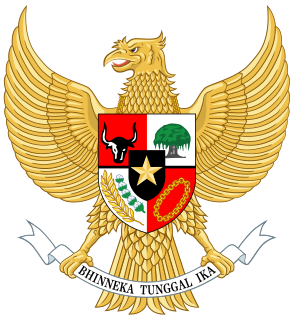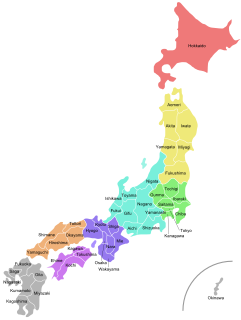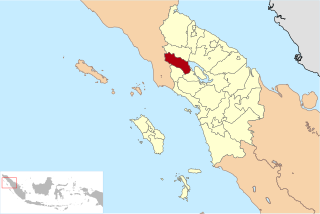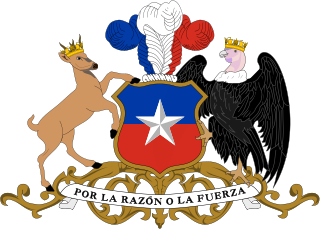 |
|---|
| This article is part of a series on the politics and government of Indonesia |
| Pancasila(national philosophy) |
| Constitution |
Executive |
|

An administrative village or subdistrict is the lowest level of government administration in Indonesia. It can refer to a desa or a kelurahan. A desa is headed by a kepala desa, who is elected by popular vote. A kelurahan is headed by lurah, a civil servant appointed by local government (city or regency). A village is divided non-administratively into local communities which manage a certain number of households. In Aceh, a village is called as gampong . Since the implementation of regional autonomy in 2001, the larger nagari has been introduced in place of the desa as the lowest government unit in West Sumatra. [1]

Indonesia, officially the Republic of Indonesia, is a country in Southeast Asia, between the Indian and Pacific oceans. It is the world's largest island country, with more than seventeen thousand islands, and at 1,904,569 square kilometres, the 14th largest by land area and 7th in the combined sea and land area. With over 261 million people, it is the world's 4th most populous country as well as the most populous Muslim-majority country. Java, the world's most populous island, is home to more than half of the country's population.

Aceh is a province of Indonesia. It is located on the northern end of Sumatra. Its capital and largest city is Banda Aceh. It is close to the Andaman and Nicobar Islands of India and separated from them by the Andaman Sea. Granted a special autonomous status, Aceh is a religiously conservative territory and the only Indonesian province practicing Sharia law officially. There are ten indigenous ethnic groups in this region, the largest being the Acehnese people, accounting for approximately 80% to 90% of the region's population.
A nagari is a semi-autonomous Minangkabau people regional administrative unit in West Sumatra, Indonesia. From 1983-1999 the national government attempted to apply the Javanese desa village system to other ethnic groups throughout Indonesia, and in 1983 the traditional Minangkabau nagari village units were split into smaller jorong units, with some disruption to traditional nagari-centred social and cultural institutions. However following restoration of the role of the nagari in rural Minangkabau society after 1999 residence and employment in a nagari is still an aspect of social identity, just as residence in the smaller jorong, or membership of a clan.
The village is the lowest level of government administration in Indonesia. A village is divided into several community groups ( rukun warga (RW)), which are further divided into neighbourhood groups (rukun tetangga (RT)).

Rukun Warga (RW) is the division of regions in Indonesia under the Village or Kelurahan. Rukun Warga not including the division of administration, and the formation of local communities is through consultation in the framework of community service set by the village or villages. RW is further divided into Rukun Tetangga (RT). Most information about governance and functioning of the RW and RT is in Indonesian. Some non-Indonesian anthropologists have written about the functions and issues of the RW.
As of September 2019, there were 83,436 fourth-level administrative divisions (desa, kampungpekon, or kelurahan) in Indonesia. [2]











